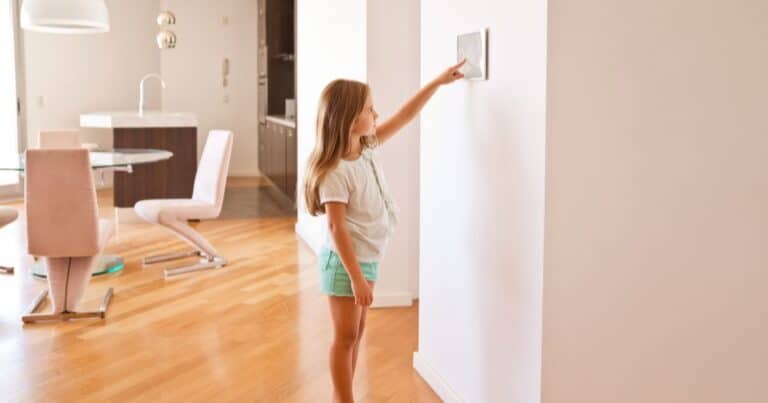
As parents, our top priority is the safety and well-being of our children. Therefore, ensuring our kids are equipped for emergencies is a crucial task that cannot be overlooked. From minor accidents to more significant unforeseen events, teaching our kids emergency preparedness at home empowers them with essential life skills. It instills a sense of confidence in facing the unknown.
In this article, I explore age-appropriate discussions, family emergency plans, first aid basics, and engaging activities that will make learning about emergencies educational and fun for our kids.
By fostering a prepared and resilient household, we can rest assured that our children will be poised to navigate any unexpected situations. So, let's embark on this journey together and ensure our little ones are ready to face the world with confidence and strength.
Have age appropriate discussions
Discussing emergencies with your kids is necessary to help them make sense of these situations and cope with their emotions during unexpected circumstances. Failure to do this will make children fearful and anxious when these situations arise.
If you're unsure where to start, here are some resources you may find helpful to teach kids emergency preparedness at home, tailor-fit to their age:
- Storybooks and storytelling sessions instil essential information and coping strategies in times of natural hazards and emergencies, even for kids not yet of reading age. Thankfully, you can find a wide array of materials from local libraries and free printable resources such as activity sheets online. Save the Children has lessons books and reading lists for kids of various grade levels.
- Once your little one turns 3, they can learn to call Triple Zero (000), Australia's 911. Explain what 000 is, when to call emergency services, and what information to provide once they reach the hotline. This guide from the Canadian government has a section on teaching children about emergency calls.
- For older kids, I love this Teen Prep Kit from PrepareCenter.org. It has fun modules and videos created especially for teenagers and how they can confidently handle different emergencies.
Identify potential risks
Knowledge is power, so being aware of potential risks is the first step when you teach kids emergency preparedness at home.
Bushfires, extreme heat, and storms and floods are some natural hazards we experience here in Australia. It's important for your kid to acknowledge the risks they could face where they live to prepare better.
Aside from natural hazards, study your neighbourhood. Traffic accidents, home theft, and school shootings are realities in some areas.
Teach your kid how to prevent them, as well as how to keep themselves safe when facing these situations.
Create an emergency plan
An emergency plan is crucial to ensure the safety and well-being of your kid. Additionally, if you have family members with special needs (like your senior parents or persons with disabilities) and pets, the more you need an emergency plan to give them a better chance for survival.
Typically, an emergency plan looks includes:
- An evacuation plan, or where your child can go, how to get there, and what to do when they get separated from you
- A go-bag, or a kit that contains emergency items like snacks, water, first aid, IDs, and other comfort stuff
- An emergency contact list which contains contact information of emergencies and relatives to call when help is needed.
Remember to thoroughly discuss and regularly practice possible emergency scenarios so your child will build more confidence when/if the real thing happens.
Instruct them how to call 000
As I mentioned earlier, children as young as 3 can learn to call emergency services.
Unfortunately, a 2021 study revealed that 91% of kids don't know how to call 911 - the counterpart of 000 in North America. Don't let your kid be part of that statistic!
Aside from instructing your child how to call 000, minimise the barriers to successfully placing an emergency call. For example, you can turn off password protection or set up 000 as the emergency number on your child's smartphone.
If you opt not to give your kid their phone, make sure they can easily access your smartphone and how to bypass your passcode.
Teach them basic first aid
Basic first aid is essential when you teach kids emergency preparedness at home. This critical skill will help your kid during different medical situations.
Did you know you can teach your child about basic first aid and CPR as early as 6?
Simple techniques such as putting on a band-aid, applying pressure to a bleeding wound, putting an ice pack over a swollen injury, or applying cold water on burns are doable for kids in kindergarten.
As they grow, you can add more complex first aid knowledge. Handling ointments and medicines, CPR, and Heimlich manoeuvre can be taught when they are older.
Of course, you can only teach then as much as you know, so consider updating your skills with a reputable first aid course.
Do some safety drills
Regular emergency drills are a requirement in schools and workplaces here in Australia. Why not do the same at home?
Before you start with your drills, create an evacuation map for your home. Walk through the map with your kid, familiarising them with different areas of your house. Instruct them how to get out of any room in times of emergencies, as well as when it is safe to go back.
Alongside safety drills, actually keep your house safe! Make efforts to minimise obstructions in your house. If needed, design your place in such a way that kids can get out safely and quickly. Secure heavy, bulky furniture on the walls, and keep breakable objects out of the way.
Encourage confidence
Things might not go exactly as planned during a disaster, but adequate education and practice give your kid a better chance to keep a level head and know what to do when emergencies happen for real.
Make sure that your child thoroughly understands every element of your emergency plan. Give them positive reinforcements when they take your safety drills and lessons seriously.
When you teach kids emergency preparedness at home, involve them every step of the way. Ask for their ideas and opinions, and find a way to include their inputs in your plans.
For example, when my second daughter was younger, she always asked to pick out the snacks to include in our go-bags, so we gave her that duty. This simple thing made her feel that her role is important, making her more confident in her knowledge.
Be calm and reassuring
Maintaining a calm and reassuring demeanour while preparing kids for emergencies is paramount. Your composed presence serves as a stabilising force, quelling their fears and uncertainties.
Use age-appropriate language to explain potential situations and safety measures, avoiding unnecessary details that might overwhelm. Emphasise that preparedness is a family effort, fostering a sense of unity and security. Address their concerns with patience and empathy, validating their emotions. Engage in practice drills and discussions, showcasing confidence in the plans you've crafted together.
By radiating reassurance, you empower children to approach emergency preparation with a balanced mindset, enabling them to navigate challenges with a greater sense of tranquility.
Conclusion: Teaching kids emergency preparedness at home
Guiding kids through the process of emergency preparedness at home is a vital responsibility that instils invaluable skills and confidence.
Age-appropriate discussions about potential risks and safety measures are crucial, as they help children process emotions and reduce anxiety when faced with unexpected situations. By involving them in creating an emergency plan, teaching them how to call for help, imparting basic first aid knowledge, and conducting safety drills, you equip them with the tools needed to respond effectively.
Your calm and reassuring demeanour throughout this process provides a strong foundation, ensuring that your children approach emergencies with a sense of unity, security, and tranquillity.













